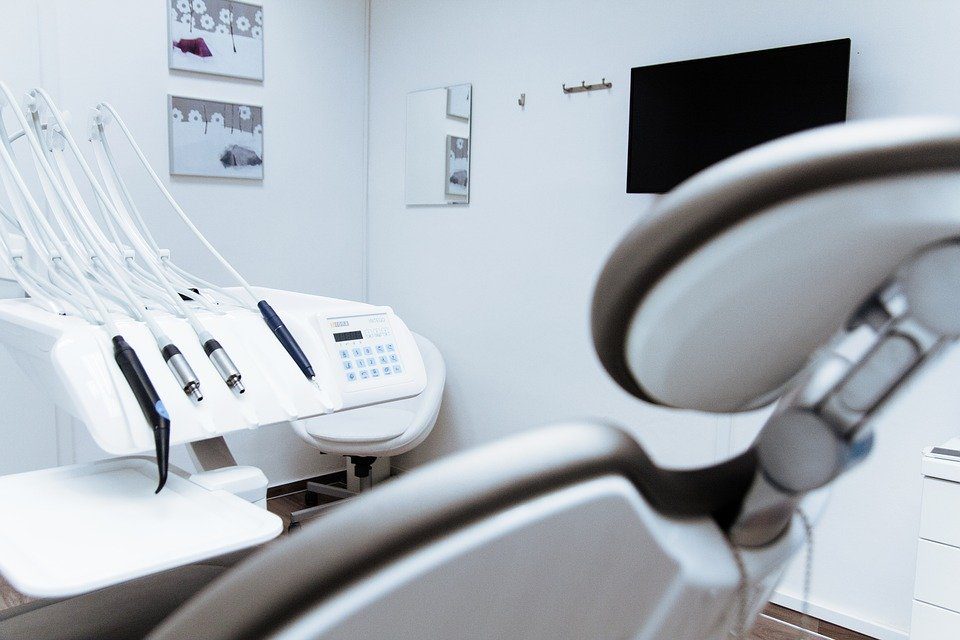November is a great month to remember the importance of good dental hygiene. It’s right after Halloween and all of its sugary goodness but right before the holiday season where cookies, fudge, and other sticky treats are a dime a dozen. November is also the time of year before your dental insurance resets for the New Year, so it’s a good time to take full advantage of your benefits.

(Pixabay / StockSnap)
One serious condition that should not be overlooked is periodontitis. Not only is it painful and unsightly, but it also brings with it all kinds of other health risks. If you suspect that you have periodontal disease, you should schedule an appointment with your dentist right away.
What is Periodontitis?
Periodontitis is a nasty infection of the gums that can cause all sorts of other problems down the road. If left untreated, it can degrade your gums and the bone around your teeth to the point that your teeth fall out. It is also linked to diabetes, heart disease, and dementia, so it’s crucial that you listen to your dentist if he or she suggests treatment.
Who is at Risk?
Even though anyone can develop periodontal disease under the right circumstances, there are some factors that hasten its development. People who smoke, are obese, have type 2 diabetes, and have poor eating habits are at a higher risk of periodontal disease. Additionally, if you skip your biannual cleanings and don’t practice proper oral hygiene habits such as brushing twice daily, flossing daily, and using a fluoride mouthwash, you increase your risk. Unfortunately, even if you do all of your preventative maintenance religiously, genetics also plays a role in how likely you are to develop gum disease.
What are the Signs?
Periodontal disease has a lot of potential symptoms to watch out for, so you should visit your dentist as soon as you notice any of the following:
- Loose teeth
- Gums that bleed easily
- Receding gumline
- Swollen, red gums
- Tooth pain
- Bad breath and/or a terrible taste in your mouth
Your dentist will look for some very specific signs of periodontal disease during your exam. One thing he or she will do is measure the depth of the pockets around your teeth. Deep pockets form as your body’s response to the infection within your gums, so while three-millimeter depths are considered healthy, four-, five-, or six-millimeter depths clearly indicate that you are well into the later stages of gum disease. Your dentist will most likely take some X-rays to understand the extent of the damage and will then help explain the next course of action.
What is a Deep Teeth Cleaning?
One thing that your dentist may recommend to help you combat periodontitis is called a deep teeth cleaning, and it is made up of two parts: teeth scaling and root planing. Scaling is the process of removing the plaque and tartar from your teeth and roots, and then planing is the process of smoothing out the tooth so that the gums can reattach to the tooth. The tools your hygienist uses are specially designed to fit between the gums and teeth so that they can remove build-up all the way down to the tooth’s root. The deep cleaning process is completely different from your routine cleaning in several ways.
| Routine Cleaning | Deep Cleaning | |
|---|---|---|
| Purpose | This is a preventative measure. The goal is to remove small amounts of plaque and tartar that daily hygiene misses. | This is a reparative measure. The goal is to stop current tooth and gum degeneration from continuing and help the gums heal and reattach to the teeth. |
| Procedure | Hygienists remove small amounts of plaque and tartar right at the gum line using standard dental tools. | Hygienists remove large amounts of plaque, tartar, and bacteria located at and below the gum line. Scaling removes the plaque, while planing smooths out the surface of the tooth. |
| Anesthesia | None needed | Often used to ease discomfort. Dentist may suggest using a desensitizing toothpaste a few days before the procedure in lieu of anesthesia. |
| Side Effects | Almost non-existent. Possible sensitivity and light bleeding. | Possible sensitivity. Gums might be swollen or bleed more easily for a few days after the procedure. You may need to use a special mouthwash to prevent infection. |
| Maintenance | Regular dental check-ups every six months. Use proper dental hygiene habits. | Follow-up appointments for cleanings every three to four months. Use proper dental hygiene habits. |
Deep cleaning is an outpatient procedure that is minimally invasive but can yield impressive results. It can essentially stop periodontitis in its tracks and even reverse the damage done by years of gum disease. Luckily, periodontitis and subsequent deep cleanings are mostly preventable by following correct dental hygiene practices and seeing your family dentist regularly.
